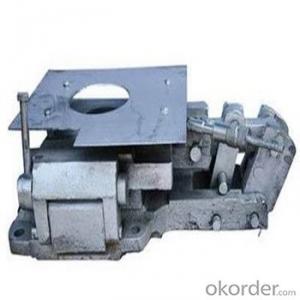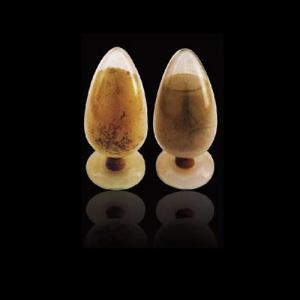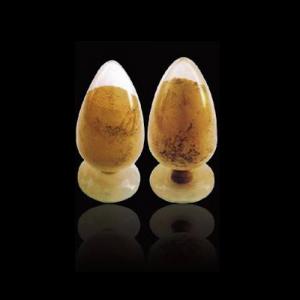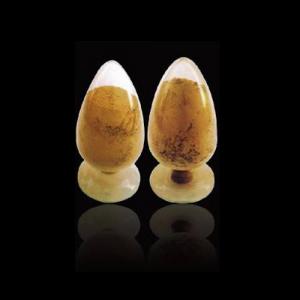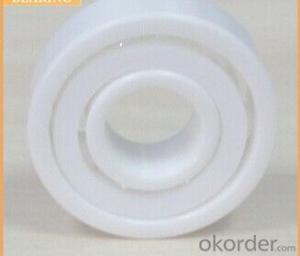Zirconia Slide Gate Nozzle Upper and Lower Nozzle Brick
- Loading Port:
- Shanghai
- Payment Terms:
- TT OR LC
- Min Order Qty:
- 100 m.t.
- Supply Capability:
- 100000 m.t./month
OKorder Service Pledge
OKorder Financial Service
You Might Also Like
Quick Details
Place of Origin: | Shandong, China (Mainland) | Shape: | Plate | Material: | SiC,Zirconia,corundum |
SiO2 Content (%): | 0.2 | Al2O3 Content (%): | 0.3 | MgO Content (%): | less |
CaO Content (%): | less | Refractoriness (Degree): | 1770°< Refractoriness< 2000° | CrO Content (%): | less |
SiC Content (%): | 7% | Model Number: | B60,B50,C40 | Brand Name: | Shikai |
Density: | 3.0g/cm3 | Al2O3: | 85% | Compressive strength: | 100Mpa |
Apparent Porosity: | 10% | Refractoriness: | more than 1790℃ | Advantage: | high refractoriness, good thermal shock resistance, erosion resistance |
Usage: | steel plant ladle and tundish | Packing: | carton,pallets | C+SiC: | 5% |
product: | slide gate,upper nozzle,lower nozzle |
Packaging & Delivery
Packaging Details: | cartons,plastic film and pallets,wooden box,As requested. |
Delivery Detail: | within 30days after get your order |
Ladle nozzle brick,upper nozzle brick,lower nozzle brick
Product information:
1.Advantage:high refractoriness, good thermal shock resistance, erosion resistance and
scouring resistance, small hole diameter change, long service life, etc.
2.Product data:
Burnt Slide gate
Item B60,B50,C40type | Al-C Slide Gate | Al-Zr-C Slide Gate | ||||||
AlC-70 | AlC -75 | AlC -80 | AlC-85 | AlC -86 | AlZrC -70 | AlZrC-75 | AlZrC -77 | |
Al2O3,% | 70 | 75 | 80 | 85 | 86 | 70 | 75 | 77 |
C+SiC,% | 7 | 7 | 5 | 5 | 4 | 7 | 7 | 7 |
ZrO2,% | - | - | - | - | - | 6 | 6 | 2.5 |
A.P.,% max | 10 | 10 | 10 | 10 | 7 | 10 | 10 | 10 |
B.D.,g/cm3 | 2.8 | 2.9 | 2.9 | 3.0 | 2.95 | 3.00 | 3.05 | 2.90 |
C.C.S., MPa min | 65 | 70 | 100 | 100 | 100 | 110 | 115 | 100 |
Unburned compound AlC Slide gate
Item B60,B50,C40type | Al-C Slide Gate | ||||
AlC-70A | AlC-75A | AlC-80A | AlC-85A | AlC-86A | |
Al2O3,% | 70 | 75 | 80 | 85 | 86 |
C,% | 7 | 7 | 5 | 5 | 4 |
A.P.,% max | 10 | 10 | 8 | 10 | 7 |
B.D. g/cm3 min | 2.8 | 2.9 | 3.0 | 3.0 | 2.95 |
C.C.S., MPa min | 65 | 70 | 100 | 100 | 100 |
zirconium core :
Item | ZN- 65 | ZN- 70 | ZN- 75 | ZN- 80 | ZN- 85 | ZN- 90 | ZN- 93A | ZN- 93B | ZN- 93C | ZN- 93D | ZN- 95A | ZN- 95B | ZN- 96 |
ZrO2(%) | ≥65 | ≥70 | ≥75 | ≥80 | ≥85 | ≥90 | ≥93 | ≥93 | ≥93 | ≥93 | ≥95 | ≥95 | ≥96 |
Bulk density (g/cm3) | ≥3.8 | ≥3.8 | ≥3.9 | ≥4.0 | ≥4.1 | ≥4.3 | ≥5.1 | ≥4.9 | ≥4.7 | ≥4.4 | ≥4.6 | ≥5.2 | ≥5.2 |
Apparent Porosity(%) | ≤23 | ≤22 | ≤22 | ≤20 | ≤20 | ≤20 | ≤13 | ≤15 | ≤18 | ≤20 | ≤20 | ≤9 | ≤5.6 |
Thermal shock resistance (cycles)(1100℃,water cooling) | >5 | >5 | >5 | >5 | >5 | >5 | >5 | >5 | >5 | >5 | >5 | >8 | >10 |
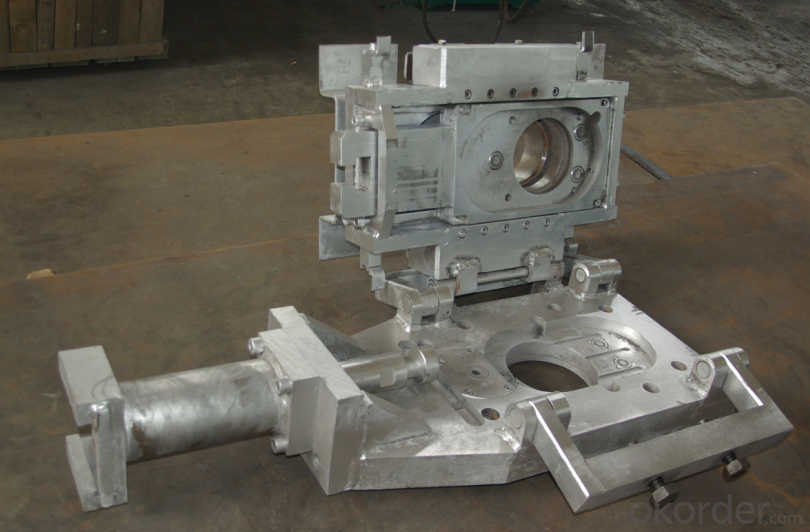
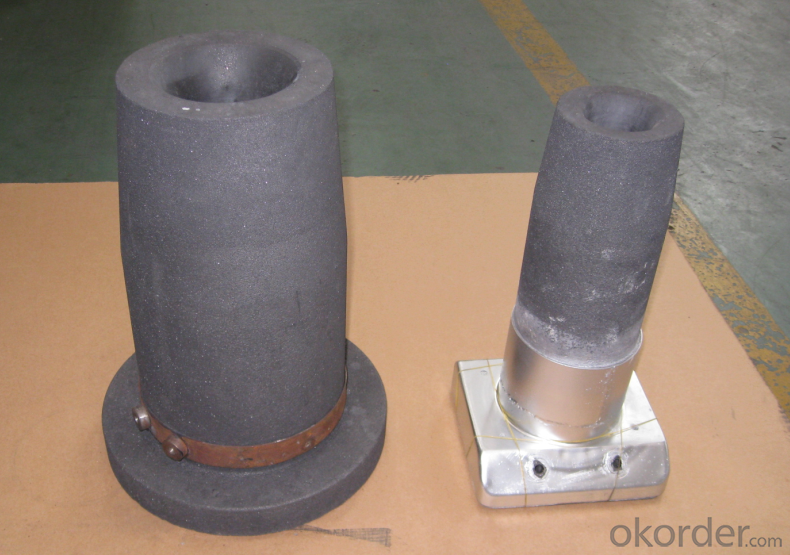
FAQ
We have organized several common questions for our clients,may help you sincerely:
①How about your company?
A world class manufacturer & supplier of castings forging in carbon steel and alloy steel,is one of the large-scale professional investment casting production bases in China,consisting of both casting foundry forging and machining factory. Annually more than 8000 tons Precision casting and forging parts are exported to markets in Europe,America and Japan. OEM casting and forging service available according to customer’s requirements.
②How to guarantee the quality of the products?
We have established the international advanced quality management system,every link from raw material to final product we have strict quality test;We resolutely put an end to unqualified products flowing into the market. At the same time, we will provide necessary follow-up service assurance.
- Q:How do monolithic refractories contribute to the efficiency of iron and steel production?
- Monolithic refractories play a crucial role in enhancing the efficiency of iron and steel production processes. These refractories are known for their superior thermal properties, high resistance to mechanical stress, and excellent resistance to chemical corrosion. One key way that monolithic refractories contribute to the efficiency of iron and steel production is by providing effective insulation. By lining the walls of furnaces and other high-temperature equipment, monolithic refractories prevent heat loss and ensure that the desired temperatures are maintained consistently. This insulation helps to reduce energy consumption, as less heat is wasted, ultimately leading to cost savings. Additionally, monolithic refractories offer excellent thermal shock resistance. In the iron and steel industry, frequent heating and cooling cycles are common, and traditional refractory materials may crack or fail under these conditions. However, monolithic refractories can withstand rapid temperature changes without failure, ensuring the longevity and reliability of the refractory lining. This resistance to thermal shock reduces downtime for repairs and maintenance, thereby increasing the overall efficiency of the production process. Moreover, monolithic refractories have strong resistance to chemical corrosion. In iron and steel production, various corrosive substances are present, including molten metal, slag, and gases. The use of monolithic refractories as lining materials helps to protect the underlying structures from chemical attack, preventing erosion and extending the service life of the equipment. This resistance to corrosion reduces the need for frequent repairs or replacements, leading to cost savings and increased productivity. Furthermore, monolithic refractories offer easy installation and repair. Unlike traditional refractories, which are often built brick by brick, monolithic refractories are applied as a single mass. This allows for faster installation and reduces the potential for weak points or joints that might compromise the overall efficiency of the refractory lining. Additionally, when repairs or maintenance are required, monolithic refractories can be easily patched or replaced, minimizing downtime and ensuring smooth operation. In summary, the use of monolithic refractories in iron and steel production contributes to increased efficiency in several ways. Their excellent thermal insulation properties reduce energy consumption, while their resistance to thermal shock and chemical corrosion ensures reliable and long-lasting refractory linings. Additionally, their easy installation and repair capabilities further enhance productivity. Overall, monolithic refractories are a vital component in improving the efficiency and sustainability of iron and steel production processes.
- Q:What are the different techniques for installing monolithic refractories?
- There are several techniques for installing monolithic refractories, each with its own advantages and suitability for different applications. Some of the common techniques include: 1. Casting: In this technique, the refractory material is mixed with water or a binder to form a slurry. The slurry is then poured into molds or directly onto the prepared surface. The material is allowed to set and harden, forming a solid monolithic structure. 2. Gunning: Gunning involves spraying the refractory material onto the surface using a gunning machine. The material is mixed with water or a binder to form a wet mix, which is then propelled onto the surface at high velocity. This technique is commonly used for repairing or lining larger areas and can be done onsite. 3. Ramming: Ramming involves compacting the refractory material into place using a pneumatic or manual ramming tool. The material is typically preheated to reduce moisture content and increase workability. This technique is often used for lining smaller areas or for filling gaps between bricks or precast shapes. 4. Shotcreting: Shotcreting is a technique similar to gunning, but it involves using a dry mix of refractory material. The dry mix is combined with water or a binder just before it is sprayed onto the surface using a high-pressure nozzle. Shotcreting is commonly used for lining larger areas or for creating complex shapes. 5. Troweling: Troweling involves applying the refractory material onto the surface using a trowel or a similar tool. The material is typically a wet mix and is spread and smoothed manually. This technique is often used for patching or repairing small areas or for finishing touches. 6. Vibrating: Vibrating involves using a vibrating tool or a vibrator to compact the refractory material and remove air pockets. This technique is commonly used for improving the density and strength of the monolithic refractory after it has been installed using other techniques. It is important to note that the selection of the technique depends on various factors such as the type of refractory material, the size and shape of the area to be lined, and the specific requirements of the application. Additionally, proper preparation of the surface and adherence to installation guidelines are crucial for ensuring the effectiveness and longevity of the monolithic refractory.
- Q:Can monolithic refractories be customized for specific iron and steel processing requirements?
- Yes, monolithic refractories can be customized for specific iron and steel processing requirements. Monolithic refractories are versatile and can be tailored to meet the specific needs of different processing techniques such as iron and steel production. They can be formulated with different materials, densities, and compositions to withstand high temperatures, resist corrosion, and provide optimal thermal insulation. This customization ensures that the refractories effectively protect the equipment and enhance the efficiency and productivity of iron and steel processing operations.
- Q:What are the considerations for selecting monolithic refractories for ladles and tundishes?
- Some considerations for selecting monolithic refractories for ladles and tundishes include the specific temperature requirements, chemical composition of the molten metal, thermal shock resistance, erosion and corrosion resistance, mechanical strength, ease of installation and maintenance, and cost-effectiveness.
- Q:How are monolithic refractories installed in iron and steel production processes?
- The installation of monolithic refractories in iron and steel production processes necessitates various methods depending on the specific application and requirements. The installation process typically encompasses the subsequent steps: 1. Surface Preparation: Prior to installing monolithic refractories, it is imperative to adequately prepare the surface where they will be applied. This involves cleansing and eliminating any loose materials, dust, or contaminants from the substrate. 2. Mixing: Monolithic refractories comprise diverse materials, including aggregates, binders, and additives. These constituents are blended in specific proportions to attain the desired properties and consistency. The mixing process can be executed manually or using mechanical mixers. 3. Application: Various techniques exist for applying monolithic refractories, such as gunning, casting, ramming, and troweling. The chosen method is contingent upon factors such as the structure's shape, accessibility, and required thickness. - Gunning: This technique entails utilizing a gunning machine to spray the refractory material onto the surface. It is frequently employed for repairing or patching existing linings or for swift installation in hard-to-reach areas. - Casting: In casting, the refractory material is poured into molds or forms and allowed to solidify and harden. This method is suitable for fabricating intricate shapes and large-sized components. - Ramming: Ramming involves manually or mechanically compacting the refractory material into a mold or form using a ramming tool. This approach is commonly employed for lining induction furnaces, ladles, and other equipment. - Troweling: Troweling is a manual method wherein the refractory material is applied and smoothed using a trowel. It is frequently utilized for minor repairs or touch-ups. 4. Curing: Subsequent to the application of the refractory material, curing is necessary to attain its optimal strength and performance. Curing involves allowing the material to dry and harden at a controlled temperature and humidity for a specified duration. This step is crucial to ensure the monolithic refractory lining's long-term durability and resistance. In conclusion, the installation of monolithic refractories in iron and steel production processes necessitates meticulous preparation, proper mixing, and the appropriate application technique. It is imperative to adhere to manufacturer guidelines and industry best practices to ensure a successful installation that fulfills the specific requirements of the production process.
- Q:What are the specific requirements of monolithic refractories for soaking pit applications?
- Monolithic refractories used in soaking pit applications need to possess certain specific requirements. They should be able to withstand high temperatures, typically above 1500°C, without losing their structural integrity. They should also exhibit excellent thermal shock resistance to withstand rapid temperature fluctuations during the heating and cooling cycles. Additionally, they must have good resistance to chemical erosion from molten metals and slag present in the soaking pit. Other desirable properties include low porosity, high density, and good mechanical strength to ensure long-term durability and resistance to wear and tear.
- Q:What are the main causes of monolithic refractory failure in the iron and steel industry?
- The main causes of monolithic refractory failure in the iron and steel industry include thermal cycling, chemical attack, mechanical wear, and improper installation or curing.
- Q:How do monolithic refractories contribute to reducing emissions in iron and steel processes?
- The reduction of emissions in iron and steel processes is greatly aided by the use of monolithic refractories, which offer a more efficient and sustainable lining solution compared to traditional brick refractories. To begin with, monolithic refractories possess a homogeneous structure that allows for easier installation and repair. This characteristic reduces the amount of time needed for maintenance, ultimately leading to increased productivity and decreased emissions. In contrast, brick refractories require more labor-intensive and time-consuming procedures for installation and repair, resulting in longer shutdown periods and higher emissions. Additionally, monolithic refractories demonstrate superior thermal insulation properties. By minimizing heat loss from furnaces or kilns, they enhance energy efficiency and decrease the amount of fuel required to reach the desired temperature. This reduction in fuel consumption directly translates into lower emissions of greenhouse gases, such as carbon dioxide, which contributes to the overall environmental sustainability of iron and steel processes. Furthermore, monolithic refractories possess excellent resistance to both thermal and chemical wear, thereby enhancing the durability and lifespan of the lining. This increased durability reduces the frequency at which refractories need to be replaced, resulting in reduced waste generation and resource consumption. By extending the service life of the lining, monolithic refractories contribute to the reduction of the environmental impact associated with the production and disposal of refractory materials. Moreover, monolithic refractories can be formulated with specialized compositions and additives to improve their resistance to corrosion and erosion, which are common challenges in iron and steel processes. By minimizing the wear and tear on the refractory lining, they help maintain the integrity of furnaces and kilns, preventing the leakage of harmful gases and pollutants that would otherwise contribute to emissions. In conclusion, monolithic refractories aid in the reduction of emissions in iron and steel processes through their ease of installation and repair, superior thermal insulation properties, increased durability, and resistance to corrosion and erosion. By optimizing energy efficiency, minimizing downtime, and reducing waste generation, monolithic refractories provide a sustainable solution for the industry, aligning with global efforts to combat climate change and promote environmental stewardship.
- Q:How do monolithic refractories perform in rotary hearth furnace applications?
- The performance of monolithic refractories in rotary hearth furnaces is well-known. These refractories are specifically designed to endure the extreme temperatures and harsh conditions found in these furnaces, making them the ideal choice for this particular application. One major advantage of monolithic refractories is their resistance to thermal shock. In rotary hearth furnaces, the material being processed is subjected to rapid heating and cooling cycles, which can cause significant stress on the refractory lining. Monolithic refractories have excellent thermal conductivity and low thermal expansion, enabling them to withstand these temperature fluctuations without cracking or spalling. Another important characteristic of monolithic refractories is their exceptional resistance to abrasion. In rotary hearth furnaces, the material being processed may contain abrasive particles that can wear down the refractory lining over time. Monolithic refractories are formulated with high-quality aggregates and binders that provide superior abrasion resistance, resulting in a longer lifespan for the lining. Moreover, monolithic refractories exhibit good chemical resistance, making them suitable for various applications in rotary hearth furnaces. They can withstand exposure to different chemical substances, such as molten metals, slags, and gases, without undergoing significant chemical reactions or degradation. This chemical stability ensures that the refractory lining remains intact and performs well in the demanding environment of a rotary hearth furnace. Additionally, monolithic refractories offer excellent flexibility during installation. Unlike traditional brick or tile refractories, which require complex installation procedures, monolithic refractories can be easily shaped and applied in-situ using methods like gunning, casting, or ramming. This flexibility allows for quicker and more efficient repairs or replacements of the lining, reducing downtime and maintenance costs. In conclusion, monolithic refractories are highly reliable and efficient in rotary hearth furnace applications. Their ability to withstand thermal shock, abrasion, and chemical attack, along with their easy installation, make them the preferred choice for lining materials in these demanding environments.
- Q:How do monolithic refractories contribute to the overall productivity of iron and steel production?
- The overall productivity of iron and steel production is greatly enhanced by the use of monolithic refractories. These refractories are crucial components utilized in the lining of high-temperature furnaces and other equipment employed in these industries. One of the ways in which monolithic refractories boost productivity is through their exceptional thermal insulation capabilities. By possessing high thermal conductivity, they effectively minimize heat loss from the furnaces, thereby reducing energy consumption and enhancing overall efficiency. This insulation property permits higher operating temperatures, resulting in faster and more efficient production processes. Furthermore, monolithic refractories exhibit superior resistance to thermal shock and chemical corrosion. Given the harsh conditions experienced during the iron and steel production process, such as rapid temperature fluctuations and exposure to molten metal and slag, these refractories are designed to withstand such extreme environments. This ensures prolonged service life and decreased downtime for maintenance and repairs, directly leading to increased productivity and reduced production costs. Additionally, monolithic refractories offer improved dimensional stability in comparison to traditional brick refractories. Their ability to conform to intricate shapes and structures allows for enhanced lining design, facilitating superior heat transfer and distribution. This uniformity in heat distribution contributes to improved process control and greater consistency in product quality. Moreover, the installation and repair of monolithic refractories are relatively simpler and quicker when compared to traditional brick refractories. This ease of installation and repair reduces downtime during maintenance, enabling more continuous production. The decreased downtime ultimately leads to increased productivity and higher output. In conclusion, monolithic refractories significantly contribute to the overall productivity of iron and steel production through their excellent thermal insulation, resistance to thermal shock and chemical corrosion, improved dimensional stability, and ease of installation and repair. These properties result in enhanced energy efficiency, reduced downtime, improved process control, and higher product quality, ultimately leading to increased productivity and profitability for the industry.
1. Manufacturer Overview |
|
|---|---|
| Location | |
| Year Established | |
| Annual Output Value | |
| Main Markets | |
| Company Certifications | |
2. Manufacturer Certificates |
|
|---|---|
| a) Certification Name | |
| Range | |
| Reference | |
| Validity Period | |
3. Manufacturer Capability |
|
|---|---|
| a)Trade Capacity | |
| Nearest Port | |
| Export Percentage | |
| No.of Employees in Trade Department | |
| Language Spoken: | |
| b)Factory Information | |
| Factory Size: | |
| No. of Production Lines | |
| Contract Manufacturing | |
| Product Price Range | |
Send your message to us
Zirconia Slide Gate Nozzle Upper and Lower Nozzle Brick
- Loading Port:
- Shanghai
- Payment Terms:
- TT OR LC
- Min Order Qty:
- 100 m.t.
- Supply Capability:
- 100000 m.t./month
OKorder Service Pledge
OKorder Financial Service
Similar products
New products
Hot products
Related keywords
